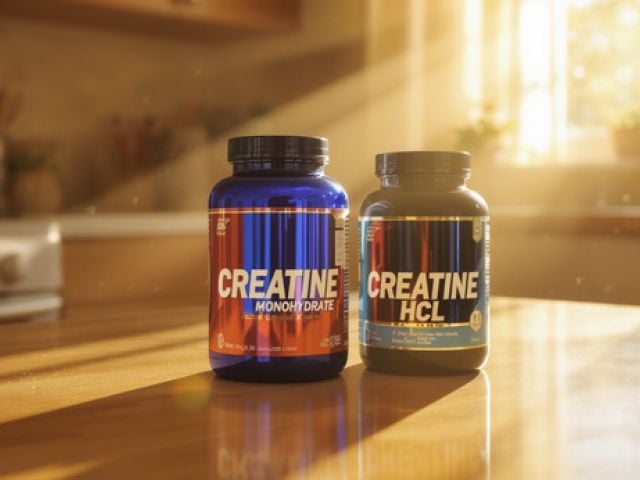
Turmeric vs Ginger: What’s the Difference and Which is Best?
You’ve probably seen turmeric and ginger sitting side by side in the spice aisle. Their golden hues promise powerful health benefits. But which one should be in your daily routine?
Both medicinal roots belong to the same plant family. They pack serious therapeutic punch. But they work completely differently in your body.
The truth is, there’s no universal “winner” between turmeric and ginger. Each herb is better in certain areas. Your choice depends on your health goals.
Key Takeaways
- Ginger wins for stomach issues – Works in 30-60 minutes for nausea and upset stomach
- Turmeric wins for chronic pain – Better for arthritis, joint pain, and long-term health
- Combination beats either alone – Using both together creates stronger anti-inflammatory effects
What Makes Turmeric and Ginger Different?

Despite their similar appearance, these roots contain very different healing compounds. This creates unique therapeutic profiles for each.
Turmeric contains curcumin as its main active compound. Curcumin makes up 2-8% of dried turmeric root. This compound gives turmeric its golden color and most of its anti-inflammatory properties.1 Scientists have found curcumin has over 100 healing compounds.
Ginger gets its power from gingerol and shogaol compounds. Fresh ginger root has higher levels of gingerols. Dried ginger develops more shogaols through the drying process. These compounds in ginger provide the spicy flavor and healing effects.
Differences at a Glance:
| Aspect | Turmeric | Ginger |
|---|---|---|
| Main compound | Curcumin (2-8%) | Gingerol/Shogaol |
| Natural absorption | <1% | ~2% |
| Primary strength | Chronic inflammation | Stomach problems |
| Onset time | Slow, sustained | Fast (30-60 minutes) |
The absorption difference is huge. Ginger works much better naturally. Its compounds reach peak blood levels within 45-60 minutes. Meanwhile, turmeric has poor absorption. Studies show less than 1% gets absorbed when eaten alone.2
Health Benefits of Turmeric vs Ginger

Both herbs deliver powerful healing effects. But they use completely different methods. This makes each suited for specific health concerns.
Anti-Inflammatory Properties
Turmeric provides stronger overall anti-inflammatory power. It blocks multiple inflammatory pathways at once.3 This includes cyclooxygenase and lipoxygenase enzymes. Its curcumin targets nuclear factor-kappa B. This regulates inflammatory gene expression.
Ginger’s anti-inflammatory effects work differently. They operate mainly through gingerol and shogaol compounds. This offers more targeted relief for acute inflammatory conditions. While less comprehensive than turmeric, ginger may help with immediate inflammation needs.
Here’s something fascinating. A study found that both herbs work better together.4 The optimal ratio is 5:2 (ginger to turmeric). This combination creates stronger anti-inflammatory activity than either herb alone.
Reduced Inflammation and Antioxidant Support
Both herbs work as powerful antioxidant compounds. They help reduce inflammation throughout your body. Turmeric’s curcumin provides broad-spectrum antioxidant activity. Ginger’s gingerol compounds offer targeted antioxidant benefits.
Think of turmeric as your long-term inflammation fighter. Ginger acts as your quick-relief option.
Digestive Health Benefits
Ginger clearly wins for stomach problems. It excels at digestive applications, especially nausea relief. Clinical studies show it works for pregnancy morning sickness. It also helps chemotherapy nausea and motion sickness. The recommended dose ranges from 1-2 grams of ginger daily for nausea prevention.
Turmeric helps digestion differently. It provides benefits mainly through anti-inflammatory effects on your gut tract. It shows promise for inflammatory bowel disease and chronic gut inflammation.
Managing Inflammatory Bowel Disease Symptoms
For those dealing with inflammatory bowel disease, turmeric works well long-term. Its sustained anti-inflammatory action may help manage chronic digestive inflammation. The curcumin content works on multiple pathways that contribute to intestinal inflammation.
Digestive Benefits Comparison:
- Ginger: Immediate nausea relief, morning sickness, motion sickness
- Turmeric: Long-term gut inflammation, inflammatory bowel conditions
Turmeric vs Ginger for Specific Conditions

Understanding which herb works best for your health concerns helps you choose wisely.
Joint Health and Arthritis
For arthritis and joint pain, turmeric works better long-term. It provides sustained anti-inflammatory action and cartilage protection. Clinical trials show that 500-1000mg of bioavailable curcumin daily works as well as NSAIDs. But with fewer side effects.5
Ginger offers quick pain relief. It works particularly well for exercise-induced muscle soreness. It also helps short-term joint discomfort. A study found ginger’s effects work faster. But they don’t last as long as turmeric’s sustained relief.
Both herbs target osteoarthritis pain. But they use different methods that can work together beautifully.
Ginger Shots for Gut Health and Nausea
Ginger shots and ginger extract have become popular for good reason. Ginger works clearly better for digestive issues. You can detect it in your blood within 30-60 minutes of drinking it.
The gingerol compounds in fresh ginger root work directly on your digestive system’s receptors. This makes it super effective for:
- Morning sickness (safe up to 1 gram daily during pregnancy)
- Chemotherapy-induced nausea
- Motion sickness
- General stomach upset
Turmeric works more slowly. But it provides sustained support for chronic digestive inflammation. It may help with long-term gut health maintenance.
Benefits of Turmeric and Ginger Used Together

The most exciting discovery from recent research is how ginger and turmeric work together.
Studies show that using both herbs together creates stronger anti-inflammatory activity. This goes beyond either herb used alone. The optimal ratio appears to be 5:2 (ginger to turmeric). This comes from clinical research showing enhanced effects.6
This combination significantly cuts inflammatory markers. This includes nitric oxide, tumor necrosis factor, and interleukin-6. You get ginger’s rapid onset combined with turmeric’s sustained action.
Benefits of Combined Use:
- Stronger anti-inflammatory power
- Better digestive tolerance
- Improved overall absorption
- Complementary healing effects
The herbs also complement each other nutritionally. Ginger’s natural bioavailability helps offset turmeric’s absorption challenges. Meanwhile, turmeric’s sustained action extends ginger’s shorter-term effects.
This is why many people find success with combination supplements. Or recipes that include both herbs together.
Turmeric Supplements vs Fresh Options

The absorption challenge makes choosing the right form of turmeric particularly important. This is where testing becomes valuable.
Fresh turmeric root provides the full spectrum of curcuminoids. But it suffers from the same poor absorption issues as powder forms. You’d need to consume large amounts to achieve therapeutic levels.
Turmeric supplements can dramatically improve absorption through several strategies:
- Black pepper extract (piperine): Increases absorption by up to 2000%7
- Fat-soluble preparations: Improve curcumin uptake
- Specialized formulations: Liposomal or phytosome complexes
For optimal results, look for turmeric supplements that include bioavailability enhancers. Jinfiniti’s Extra Strength Turmeric+ combines turmeric extract with black pepper extract. It also includes ginger extract and quercetin for better absorption and even more anti-inflammatory benefits.
Fresh vs Supplement Comparison:
- Fresh root: Full spectrum compounds, poor absorption
- Basic powder: Convenient, still poor absorption
- Enhanced supplements: Better bioavailability, standardized dosing
- Combination formulas: Synergistic effects, optimal ratios
Safety and Side Effects
Both herbs are generally well-tolerated. But they do have different safety profiles to consider.
Ginger has a better safety profile with fewer warnings. The main concerns involve its mild blood-thinning properties. Pregnant women can safely consume moderate amounts (up to 1 gram daily). This makes it preferable for pregnancy-related nausea.
Side effects from ginger are usually limited to mild stomach irritation. This happens when you consume excessive amounts (>5 grams daily).
Turmeric carries more moderate risks with several important considerations:8
- Can interact with blood-thinning medications
- May increase bleeding risk
- Should be avoided by people with gallbladder disease
- Can interfere with iron absorption
- May interact with chemotherapy drugs
Safety Guidelines:
- Start with small amounts of either herb
- Consult your healthcare provider if taking medications
- Avoid high doses during pregnancy (especially turmeric)
- Monitor for any digestive upset
The effects of turmeric on medication interactions make professional guidance important. This is especially true if you’re taking blood thinners or have scheduled surgery.
Which Should You Choose?

Your optimal choice depends on your specific health goals and current needs.
Choose Turmeric For:
- Chronic inflammatory conditions
- Joint pain and arthritis
- Long-term antioxidant support
- Heart health
- Cancer prevention research interest
Choose Ginger For:
- Digestive issues and nausea
- Quick pain relief
- Exercise recovery
- Pregnancy-related discomfort
- Immediate anti-inflammatory needs
When to Use Turmeric and Ginger Together
Many people find the greatest success using both herbs strategically. You might use ginger for immediate digestive relief. While incorporating turmeric for long-term inflammatory support.
For those interested in natural herbs and spices that fight inflammation, both turmeric and ginger rank among the most researched options available.
Ginger and Turmeric: Which is Best?

Instead of turmeric vs ginger, think about how each herb’s strengths can support your health goals.
Turmeric is great for chronic inflammatory conditions and long term health. Ginger is great for digestive issues and acute discomfort. They work differently and are absorbed differently so they are complementary not competitive.
The research shows you should use both herbs together for maximum benefit. Whether through food, teas or high quality supplements with enhanced bioavailability, using both turmeric and ginger in your daily routine gives you the best of both worlds.
When choosing supplements, look for formulations that address bioavailability. Consider combination products that combine the power of both herbs working together.
Remember the TAO approach: Test which works best for you, Act on what you learn, and Optimize over time.
Referenced Sources:
- https://journals.lww.com/10.1097/HNP.0000000000000649 ↩︎
- https://linkinghub.elsevier.com/retrieve/pii/B9780128224489000066 ↩︎
- https://safer.uct.cl/index.php/SAFER/article/view/81 ↩︎
- http://ijarsct.co.in/Paper14273.pdf ↩︎
- https://www.frontiersin.org/articles/10.3389/fphar.2021.779352/pdf ↩︎
- https://pmc.ncbi.nlm.nih.gov/articles/PMC9229778/ ↩︎
- https://pmc.ncbi.nlm.nih.gov/articles/PMC3535097/ ↩︎
- https://www.nccih.nih.gov/health/turmeric ↩︎

Get weekly health insights and exclusive offers by joining our newsletter.










